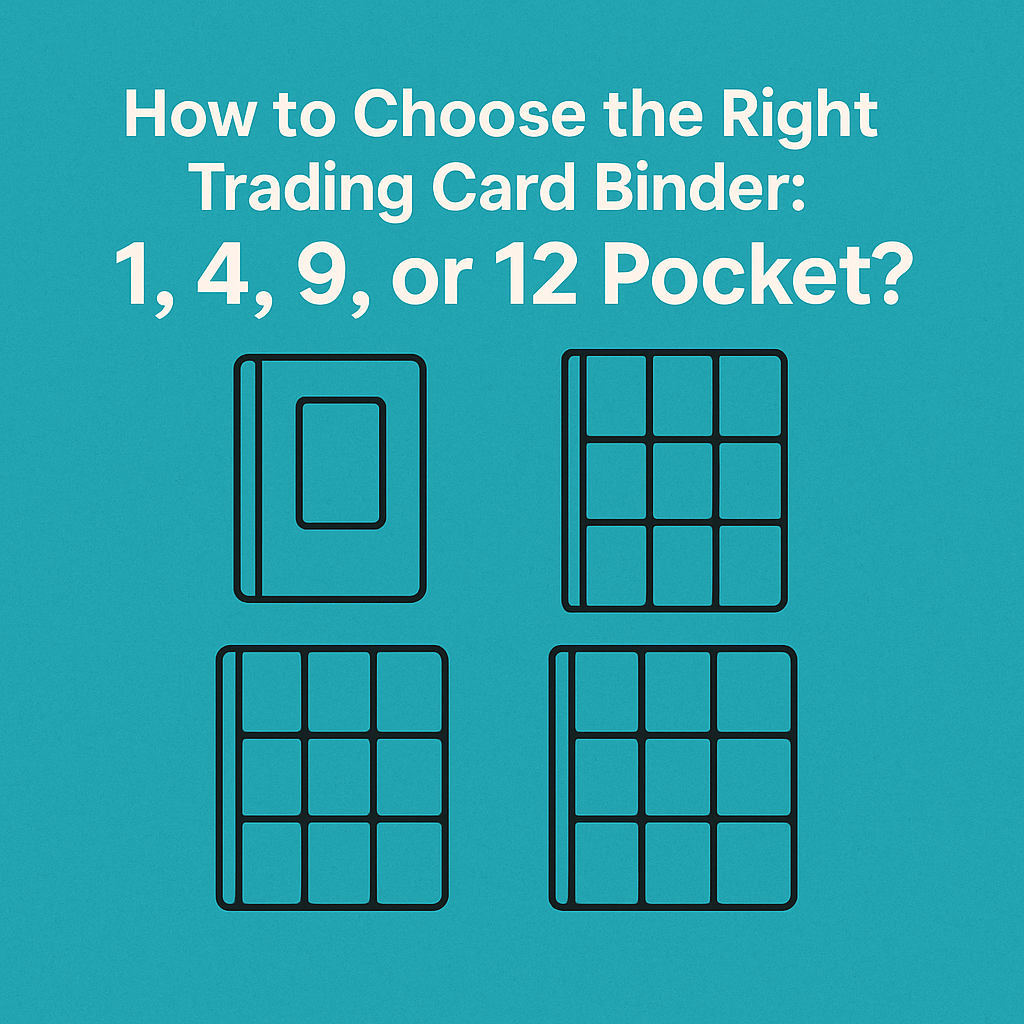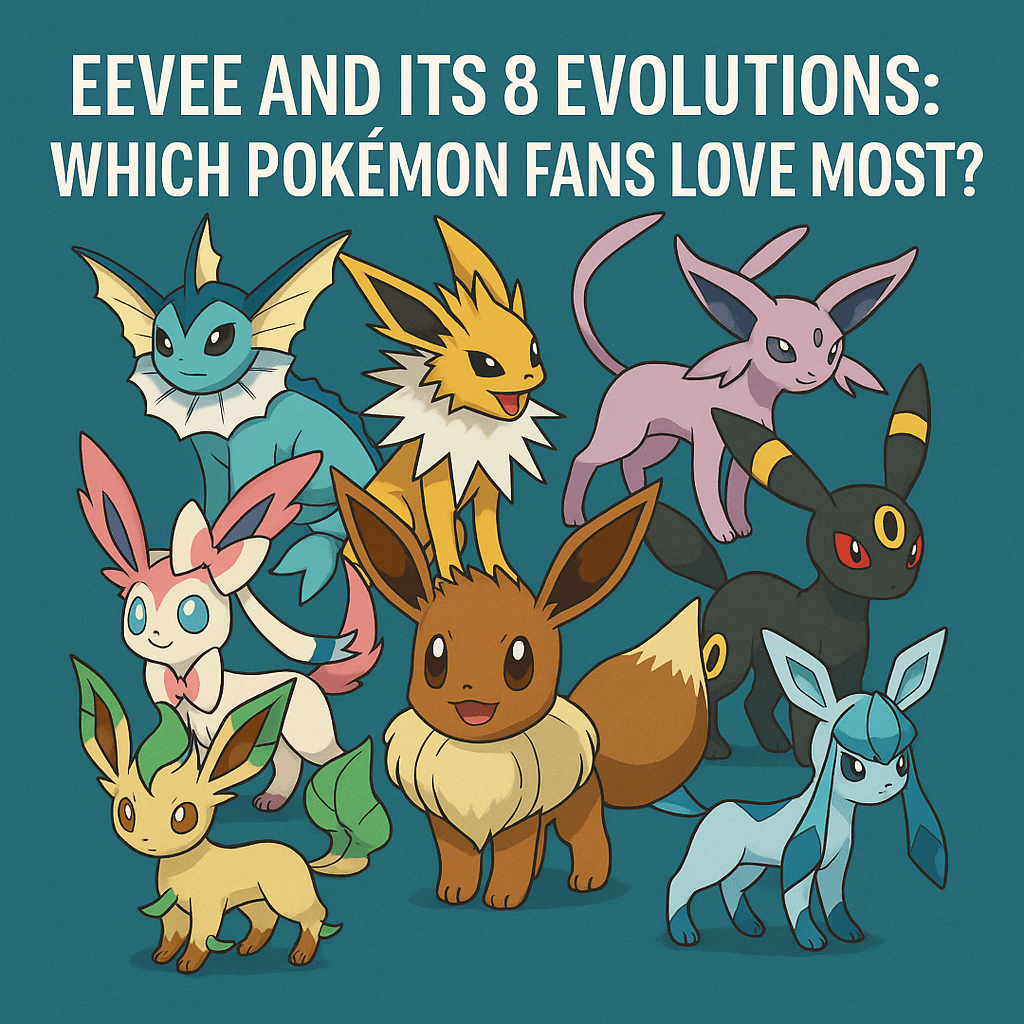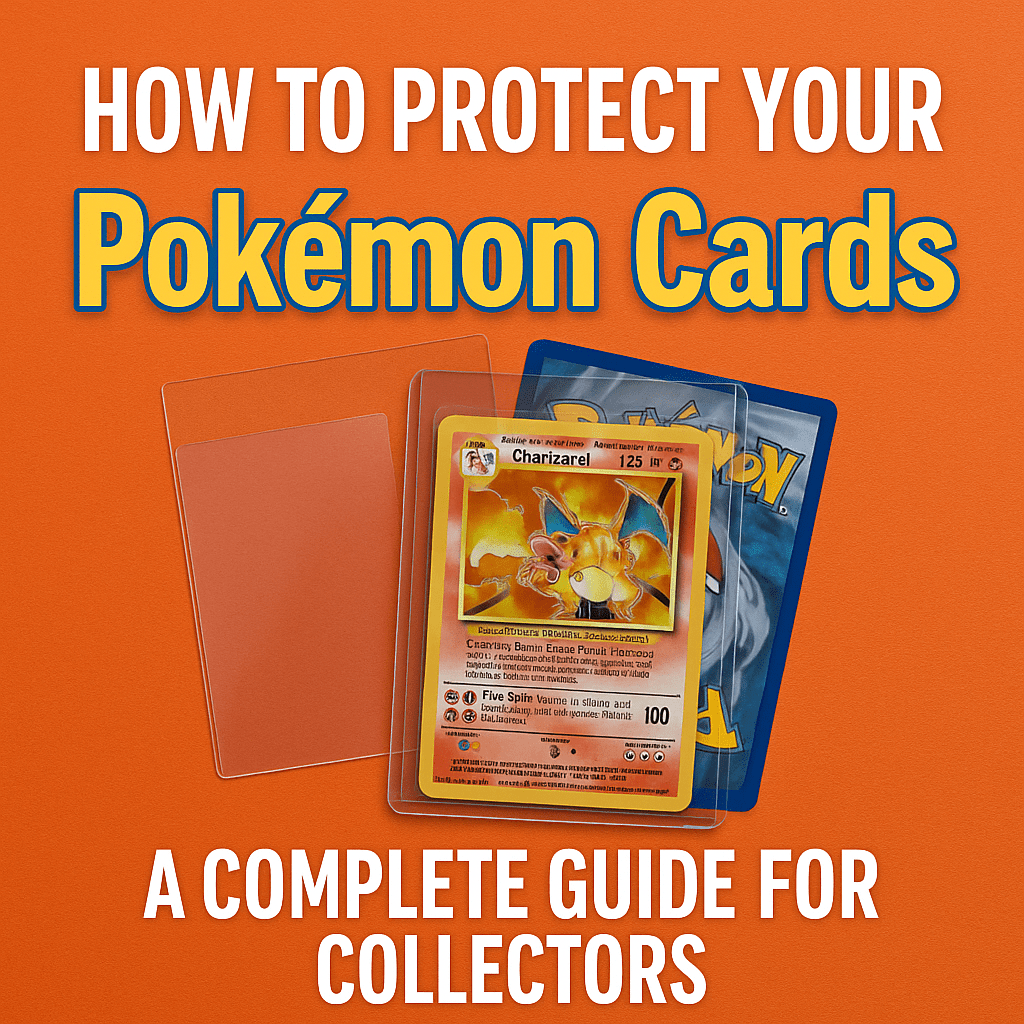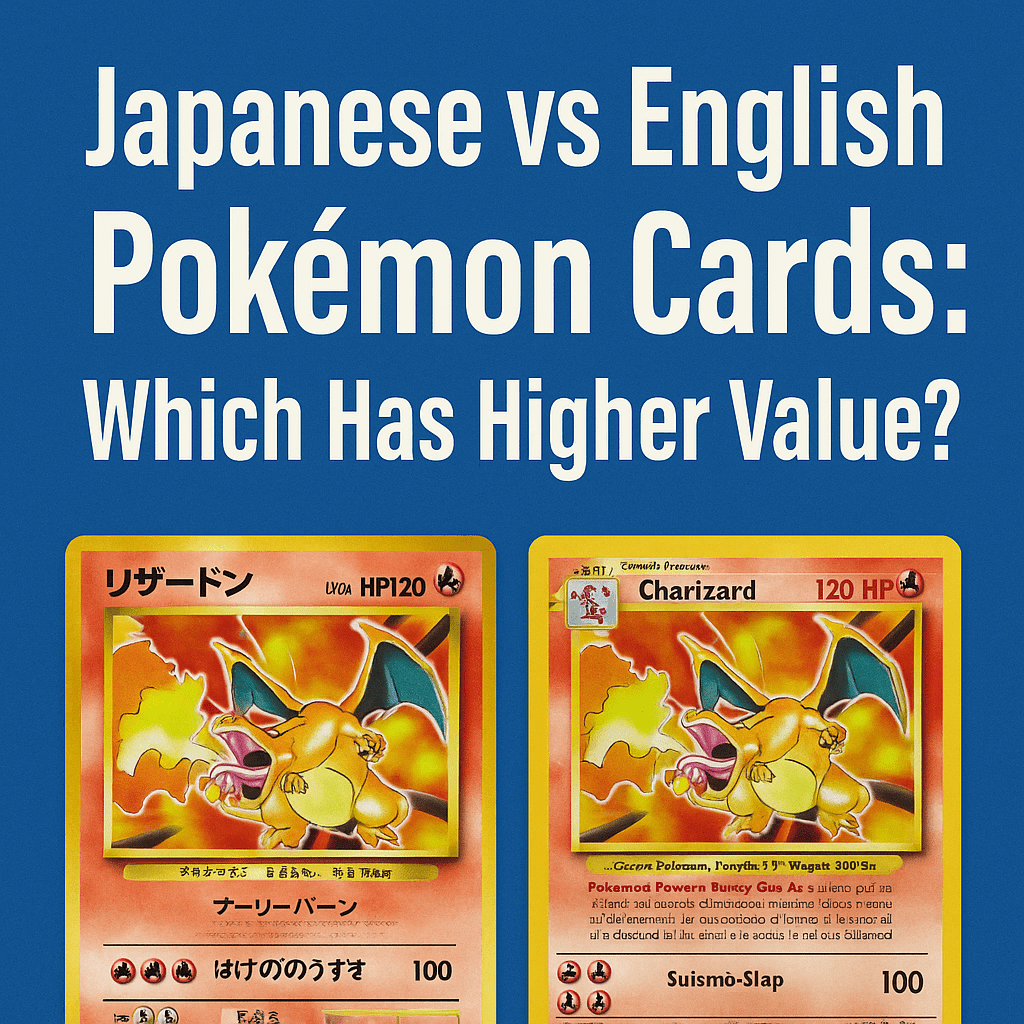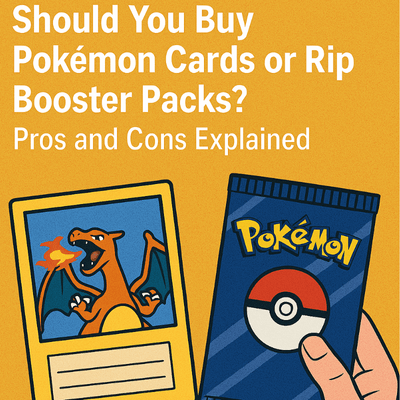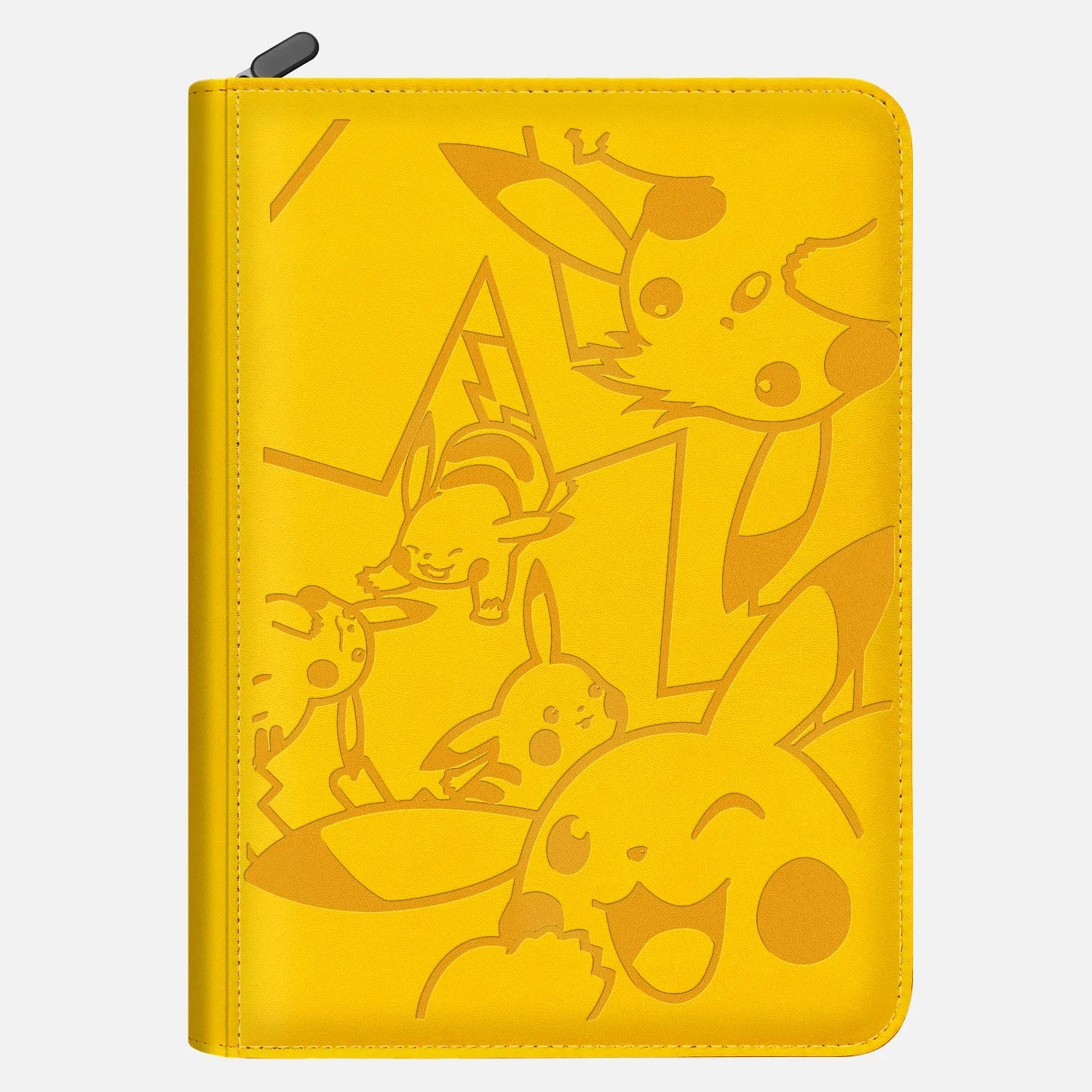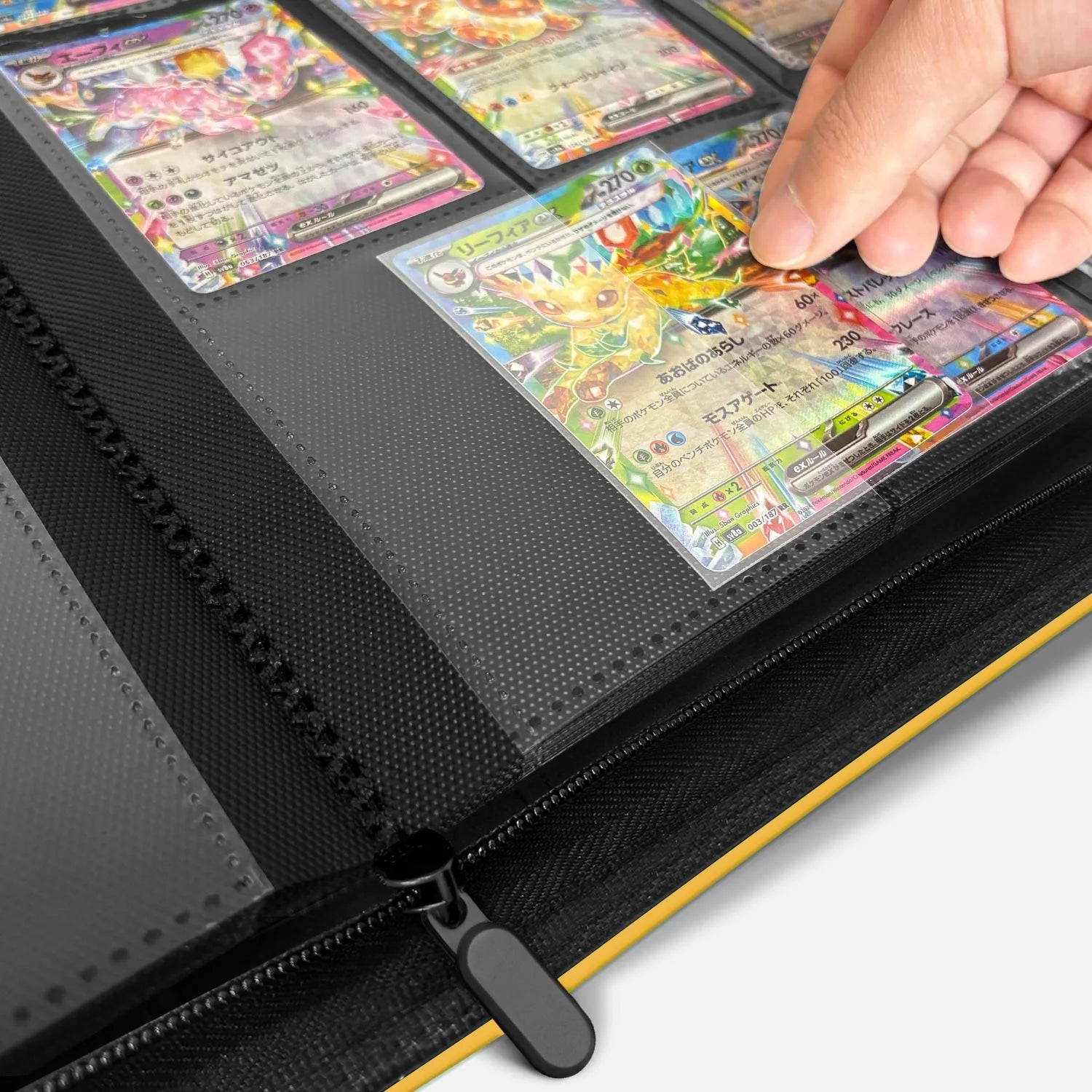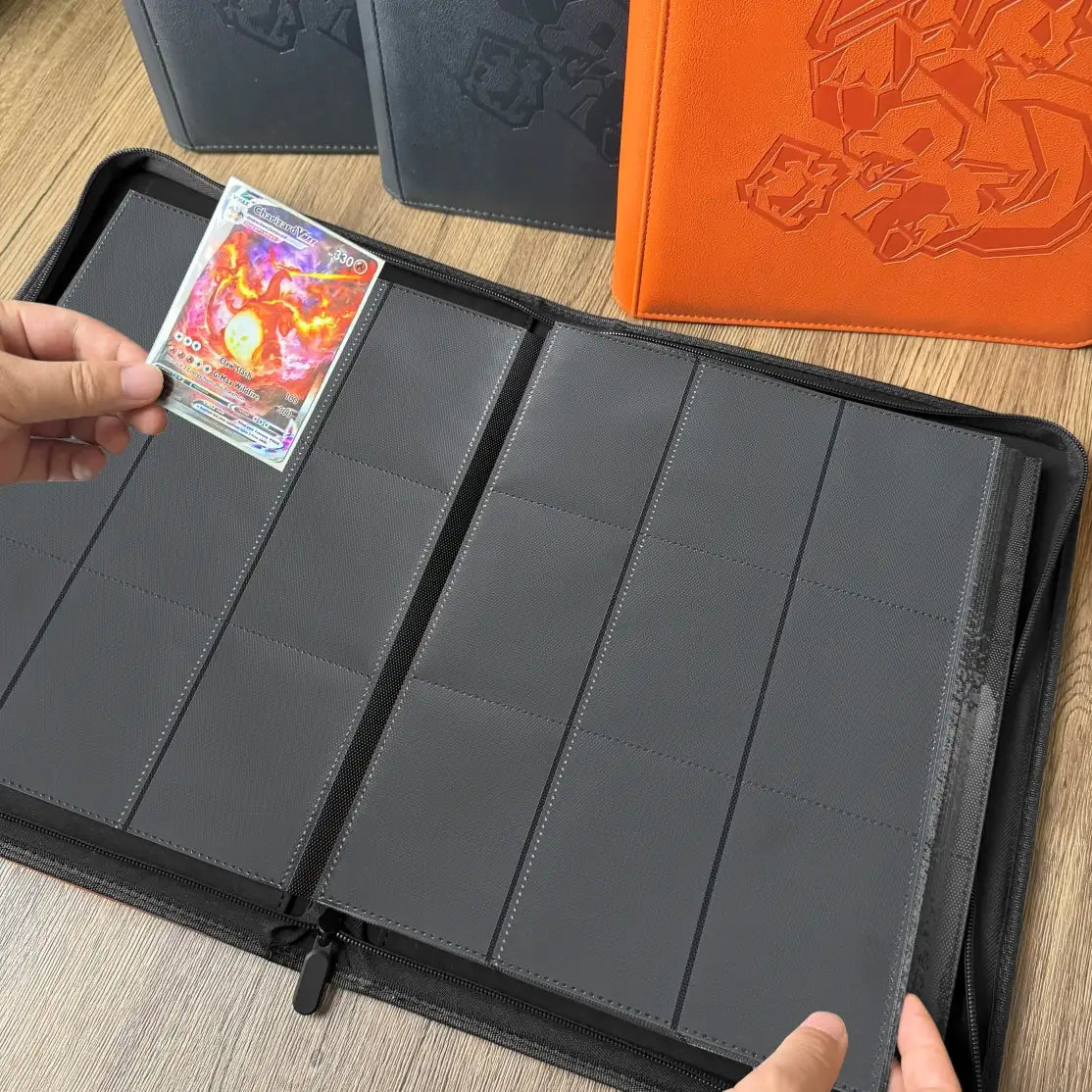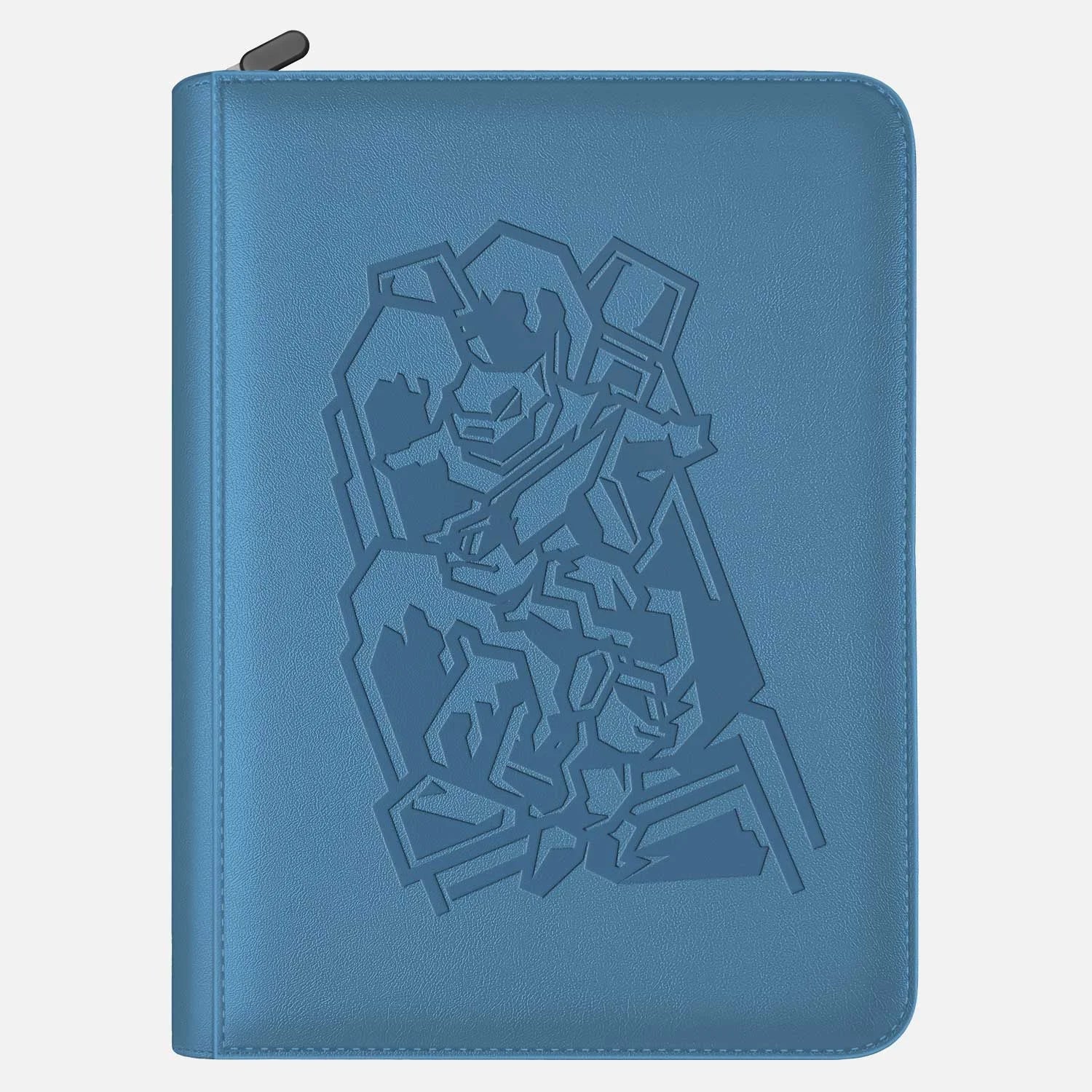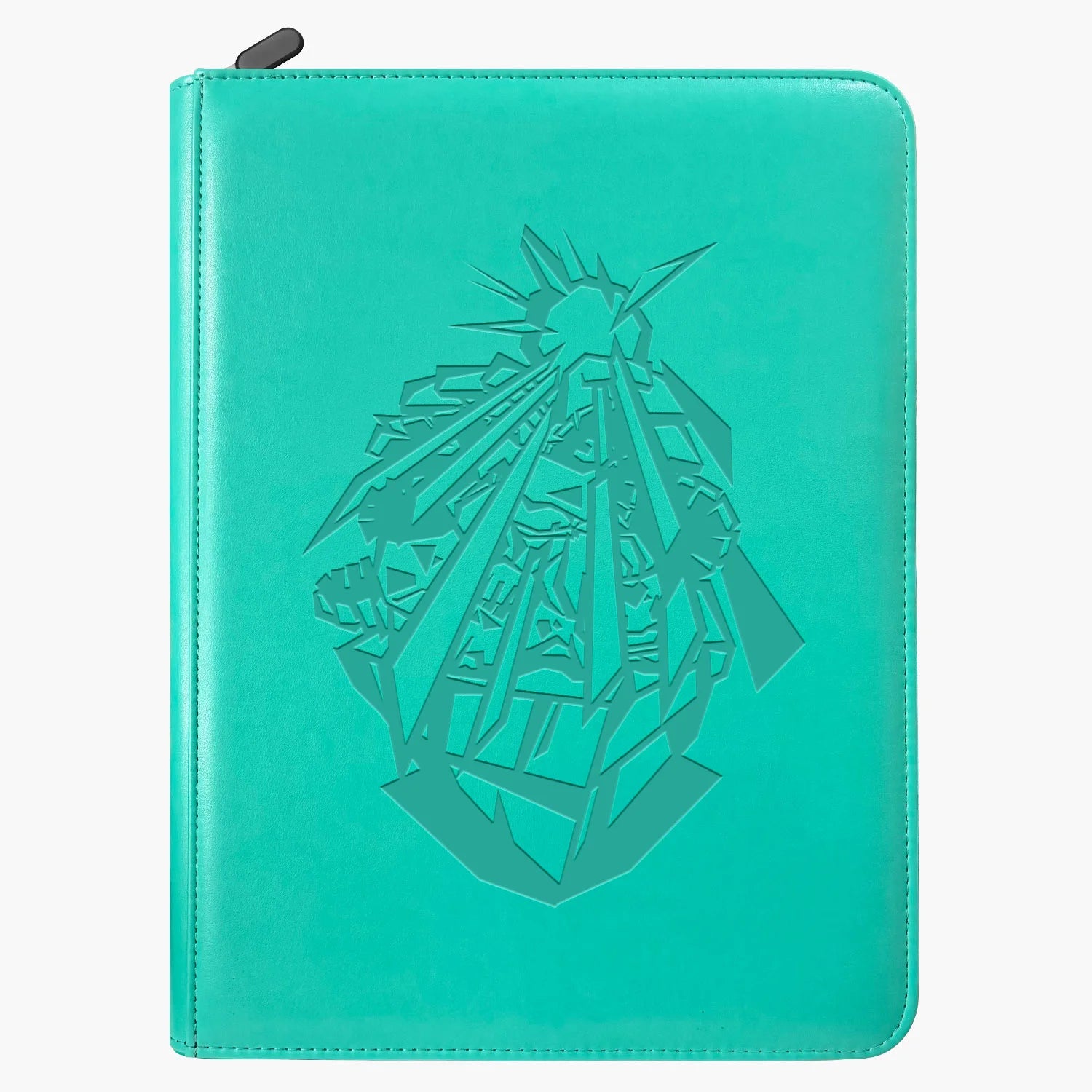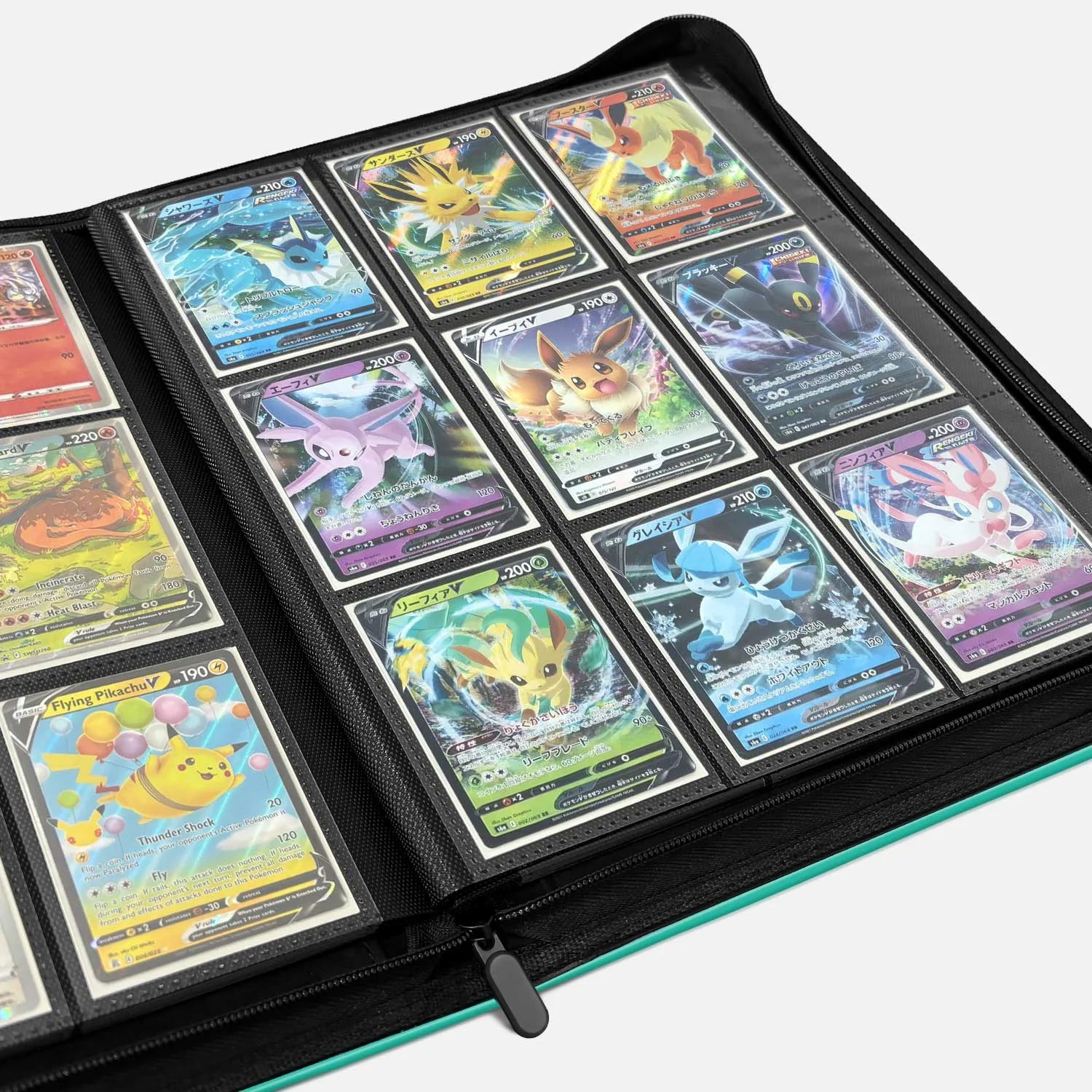Pokémon Trading Card Game collectors often compare English Pokémon cards and Japanese Pokémon cards to understand how they differ in design, availability, and value. These differences go beyond language – they affect a card’s trade worth, collectibility, and even cultural significance. In this article, we break down the key distinctions, from card appearance and pull rates to market pricing trends for iconic sets like Base Set, Sword & Shield, and Scarlet & Violet.

Design and Quality Differences
One of the most noticeable differences is in card aesthetics and build quality. Japanese cards have historically featured a different card back design from English cards. Early Japanese prints used a “Pocket Monsters Card Game” back, whereas English cards (and international versions) used the familiar blue Pokémon logo back introduced in 1999. Japanese backs were updated in the 2000s but still retain the Japanese branding, meaning today’s Japanese cards and English cards have distinct back designs. Borders are another contrast: Japanese cards typically use a sleek silver border, while English cards long had bright yellow borders – a difference many collectors noted immediately. With the Scarlet & Violet series starting in 2023, English sets finally adopted the same silver border as Japan, unifying the look globally. Collectors welcomed this change, as the silver border complements the card artwork better than the old yellow border.

A Japanese Pikachu card from the 25th Anniversary set, showcasing the silver border and Japanese text. The English version of this set had yellow borders, though modern English sets now use silver borders to match Japan. Beyond borders, the card finish and holofoil patterns can differ. Japanese cards are known for a glossy finish and unique holofoil effects that make them shine differently in light. For example, some Japanese promo cards feature special holofoil patterns (like sparkles or textured foiling) not seen on their English counterparts. The card stock also varies – English cards tend to be a bit thicker, whereas Japanese cards use slightly thinner cardstock with a smooth feel. Many collectors feel Japanese printing quality is higher, which ties into card condition: surfaces and corners from Japanese prints often come out of packs cleaner. In fact, it’s widely noted that getting a perfect Gem Mint card is easier with Japanese prints than English. English cards sometimes have minor defects or centering issues, so a flawless English card can be harder to find. This means a top-grade English card can command a premium since it’s tougher to attain a PSA grading of 10 on English printings. In contrast, Japanese cards frequently achieve PSA 10 due to strict quality control. In short, the look and feel of the cards – from Pokémon card condition to finish – often differ, with Japanese cards prized for their print quality and aesthetics.

Booster Packs, Pull Rates, and Set Composition
How cards are distributed in packs and sets is another major difference between regions. English booster packs contain 10 cards (with 36 packs per booster box), giving a larger bulk of cards per box. Japanese booster packs are smaller, usually 5 cards per pack, and 30 packs per booster box. While an English booster box yields more cards overall, it doesn’t guarantee specific rare pulls. In English products, pull rates are completely random – it’s possible (though unlucky) to open an entire 36-pack box and not pull any ultra-rare chase card. On the other hand, Japanese booster boxes have more predictable yields. Japanese sets generally guarantee at least one Secret Rare (or higher rarity) card per box. This means if you buy a Japanese box, you know you’ll get at least one high-rarity hit, whereas English boxes do not promise any specific hits. For example, the Japanese set Eevee Heroes guaranteed a Secret Rare in each box, giving a chance at the sought-after Umbreon VMAX alternate-art. Its English equivalent (part of the Sword & Shield – Evolving Skies set) had no such guarantee, making that card rarity feel much harder to pull. Many collectors appreciate the Japanese approach because it ensures some reward for the cost, reducing the pure gamble factor. Additionally, Japanese sets are often smaller and more focused, while English sets tend to combine multiple Japanese releases. This can result in English sets having a higher total number of cards (including more secret rares), which affects how easy it is to complete a set or pull a specific card. Special high-class Japanese sets even include packs with all holographic cards and multiple guaranteed hits, something English sets historically lacked until recent changes. These structural differences influence the opening experience: English products give you more cards per pack, but Japanese products often yield less bulk and more targeted pulls.

The differing pull rate philosophy also impacts card values. Because Japanese boxes reliably contain a few high-rarity cards, ultra-rare cards in Japan don’t tend to reach the extreme prices that random chance sometimes drives in English. It’s harder for a Japanese card’s price to skyrocket purely from low pull odds, since you could simply open more boxes to find it. In contrast, an English chase card with low pull rates can become very expensive on the secondary market. As an example, an Illustration Rare Drowzee from the Scarlet & Violet base set spiked to around $80 in value shortly after the English release due to hype and tough pulls, despite being a readily available card. That same card’s Japanese version (from Violet ex) peaked at only about $24 since Japanese boxes yielded it more easily. Consistent pull rates in Japan prevented the price from inflating as dramatically. In general, Japanese sets’ guaranteed pulls create more stable prices and fewer wild swings for most new cards. English releases, with higher randomness, can see bigger price volatility when a particular card becomes the center of attention in the Pokémon card market.

Availability and Collectibility
Another key difference lies in availability and how each type of card reaches collectors. English Pokémon cards are distributed worldwide – you can find them in North America, Europe, and many other regions easily at retail stores, hobby shops, and online. This wide availability means that even rare English cards can often be found for sale in many places, and completing English sets or finding specific singles is relatively convenient. Japanese cards, by contrast, are sold primarily in Japan and a few Asian markets. The print runs for Japanese sets are usually smaller than those for English sets, and after a set’s initial release in Japan, it can become difficult to find. Collectors outside of Japan often have to import Japanese products or buy from secondary sellers, which can be more expensive and time-consuming. This limited availability makes some Japanese cards inherently rarer on the global market. For example, a special promo card released only in a Japanese Pokémon Center or event might be produced in low quantities and never officially sold abroad. Such exclusives become prized by collectors worldwide who value their scarcity and unique origin.

Japan is well known for exclusive Pokémon card releases that don’t appear in English. These range from promotional cards tied to movie releases, to collaboration events, to unique art campaigns. A famous case is the “Munch Scream” promo cards, which featured Pokémon in the style of Edvard Munch’s The Scream painting – these were only released in Japan, making them sought-after globally. Another example is the Precious Collector Box Pikachu card, a high-end Japanese exclusive that fetches high prices due to its limited run. Because of such items, many serious collectors enjoy chasing Japanese cards to obtain pieces of the hobby that are truly region-specific. On the flip side, English sets historically have included some cards that Japan did not initially get (though this is less common). Generally, if you value rarity and exclusivity for your collection, Japanese cards offer a lot: they often have intricate artwork variations and limited promos not available elsewhere. This does come at a cost – Japanese cards are generally more expensive than English cards on average, especially for special releases, simply because they are harder to get outside Japan. English cards, being more common globally, tend to be more affordable for comparable rarity levels. In other words, the ease of finding English cards keeps their prices in check, whereas importing Japanese cards or finding rare Japanese promos can command a premium. Collectors often weigh this accessibility factor when deciding whether to focus on Japanese or English sets for TCG investment purposes – availability can influence long-term value.

Trade Value and Market Trends
When it comes to trade value and the secondary market, English and Japanese cards each have their own hot spots and trends. The Pokémon card value of a given card can differ between the English version and the Japanese version due to demand, supply, and cultural popularity. Let’s look at a few notable cases across eras:
-
Base Set (1996–1999): The original Base Set offers a clear example of value divergence. The English Base Set Charizard (especially the 1st Edition printing from 1999) is one of the most famous high-value cards in the hobby, with PSA 10 graded copies selling for hundreds of thousands of dollars at peak hype. The Japanese Base Set Charizard from 1996, while still coveted, typically sells for a fraction of the English one’s price. Even the ultra-rare no-rarity-symbol Japanese Charizard (the first print run in Japan without rarity symbols) costs a small fortune but not nearly as much as the English 1st Edition Charizard. Essentially, the English Base Set cards enjoy higher organic demand internationally, fueled by nostalgia and the fact that they were the cards kids around the world grew up with. Japanese Base Set cards are relatively more niche for collectors, aside from those unique early print variants. This shows that nostalgia and global recognition heavily favor the English Base Set in market value, although Japanese vintage cards remain important “first print” pieces of history.

-
Sword & Shield Era (2019–2022): In the modern era of Sword & Shield sets, we saw several instances where Japanese cards and English cards leapfrogged each other in value due to shifting demand. One prominent example is the Umbreon VMAX “Alternate Art” (often nicknamed Moonbreon by fans). In Japan, this card was released in the Eevee Heroes set and initially its Japanese version was significantly more expensive than the English edition from Evolving Skies. The Japanese Umbreon VMAX fetched high prices because of limited supply and huge demand from both Japanese and international buyers. However, over time, as English Evolving Skies gained immense popularity and some influencers hyped the chase for Umbreon, the English version’s price caught up and even surpassed the Japanese in some markets. This kind of value shift happened as the focus of the hobby’s hype rotated back to English sets. It highlights how the Pokémon card market can be cyclical – at one point Japanese exclusive cards (like certain Full-Art trainer cards featuring popular characters) were spiking in price, then the attention swung to English sets and those saw price booms. The pull rate differences also played a role: some cards were easier to pull in one language than the other, affecting how scarce they seemed to collectors. Overall, during the Sword & Shield era, English cards had huge global visibility and sometimes inflated prices due to a wave of new collectors and investors, while Japanese cards offered an alternative for collectors priced out of English cards. Many collectors switched to Japanese cards for better availability or quality during times when English products were scarce or scalped. As a result, rare Japanese cards (especially exclusive promos or early releases) still commanded strong trade value, but one must keep an eye on market trends – what’s expensive in Japanese might not always stay higher than the English counterpart, and vice versa, as demand shifts.

-
Scarlet & Violet Era (2023–Present): With the Scarlet & Violet series, the Pokémon TCG has become more globally synchronized (e.g. the border colors and set releases are closer together). Yet, value differences persist. We already saw the Drowzee illustration rare example where English hype drove the price absurdly high briefly, whereas the Japanese version stayed more reasonable. Another striking case was the special art rare Trainer card Iono from Clay Burst (Japanese set) versus Paldea Evolved (English). When Clay Burst released in Japan, the Iono SAR card became a sensation – local shortages and a craze for the character pushed its price into the thousands of dollars in Japan, far beyond what most English cards have reached. By the time the English version released in Paldea Evolved, the initial price was high but generally lower than the Japanese one at its peak. Over time, as more English product was opened and supply caught up, the English Iono’s price dropped considerably. This demonstrated again how regional supply and cultural demand can diverge: a character hugely popular in Japan might drive Japanese card prices sky-high, while outside Japan it may not sustain the same level. In the Scarlet & Violet era, English packs now guarantee more foils per pack and have adopted some of Japan’s practices (like textured illustration rares and higher rarities), narrowing some gaps. However, Japan continues to sometimes release sets or bonus packs earlier, giving a first-to-market premium for Japanese cards. For collectors, this era underlines the importance of watching both markets. Savvy traders might source a card from Japanese sets if it’s cheaper and nearly identical, or vice versa, depending on where the value is better. It’s also more evident now that Pokémon card value is driven by global interest: both English and Japanese cards can become valuable, and market TCG investment trends can flip quickly based on what the community is focusing on.

Notably, card condition and grading play a big role in trade value for both languages. High-grade cards (e.g., PSA 10 gem mint) sell for a premium. Since, as mentioned, Japanese cards often come out in better shape, you’ll find more Japanese cards achieving top grades. Many collectors will still pay more for an English card in PSA 10 if it’s a grail like Base Set Charizard, but for newer cards some prefer the Japanese version which might be easier to grade 10. Professional grading services (like the official PSA grading standards) treat both languages equally, so a 10 in English and a 10 in Japanese are both considered perfect – but the path to that 10 can be tougher for English printings. This means from a pure investment perspective, English cards in flawless condition may stay relatively scarce. Nonetheless, both English and Japanese ultra-rare cards can be worthwhile for collectors and investors, as long as one understands the nuances of their market supply. Trading between languages is common in the hobby; for instance, some collectors might trade a high-end Japanese promo for an English vintage card they need, using value guides and market data to align the trade fairly. Staying informed on current prices in both markets is key, since exchange rates and popularity can shift values over time.

Cultural and Content Distinctions
Beyond the economics and mechanics, there are cultural differences in the cards themselves. The artwork and themes on some cards have been altered between Japanese and English releases due to cultural standards. Collectors find these differences fascinating, as they reflect how the two audiences might react to certain imagery. A well-known example is Misty’s Tears, a trainer card from the Gym series. In Japan, the card’s artwork depicted Misty (Kasumi) apparently nude and crying while holding her Staryu – intended as an artistic expression of sadness and purity. This scene was considered acceptable in the original Japanese context. However, for the English release, this artwork was deemed inappropriate for a young audience (Misty is a minor character, and nudity is more sensitive overseas). The English version of Misty’s Tears was completely re-illustrated to show Misty with a Squirtle wiping her tears, a more child-friendly interpretation. Similarly, the Grimer card from the Team Rocket set had its artwork subtly changed: in Japan, Grimer’s eyes looked upward (interpreted by some as peeking up a girl’s skirt), so the English card was edited so Grimer’s eyes look forward instead of upward. These censorship or design changes make the original Japanese prints unique. Some collectors specifically seek out the Japanese versions of cards with altered art, for their uncensored or original artwork. Owning the Japanese Misty’s Tears or the original Grimer card can be a fun way to appreciate the franchise’s cultural context – these cards are little pieces of Pokémon history that highlight East-West differences.

Language on the cards is another cultural distinction. Japanese cards are printed in Japanese, using the original Pokémon names (which can differ from English names) and text. For example, the Pokémon we know as Charizard is called “Lizardon” (リザードン) on Japanese cards, and the attacks and card effects are written in Japanese. Some international collectors enjoy the novelty and aesthetic of the Japanese text, even if they cannot read it; the cards can look exotic or artistically interesting with Japanese script. On the other hand, English cards allow players and collectors to easily read the card information, which is important for those who play the game. Official tournaments outside Japan generally require English (or local language) cards for play, which is why competitive players stick to English cards. Culturally, Japanese releases often get special cards tied to events (e.g. a promo card given at a Japanese Pokémon Center store opening, or championship prize cards) that become memorabilia. The English-speaking market has its own exclusives occasionally (like prerelease stamped cards or cards in exclusive boxes), but Japan’s promotional tie-ins are more frequent. This means Japanese collectors often chase event promos and limited cards as part of their culture of collecting, whereas English collectors might focus more on set completion and high grades. Despite these differences, both English and Japanese cards celebrate the same Pokémon universe. Artwork is typically shared or adapted, and many artists create cards for both languages’ sets. The cultural nuances – whether it’s a stylistic difference in a holographic pattern or a full art card that debuts in Japan first – give each version of the cards its own charm.

In summary, understanding the differences between English and Japanese Pokémon cards can enrich your collecting experience. From visual design and guaranteed pulls to Pokémon card market values and cultural quirks, each version has its advantages. Whether you prefer the familiarity of English cards or the authenticity and exclusivity of Japanese cards, being aware of these distinctions helps you make informed choices for your collection. The world of Pokémon TCG is global and diverse, and collectors often find joy in exploring both sides – trading, collecting, and appreciating the cards not just as game pieces, but as cultural collectibles in their own right. By keeping an eye on quality, card rarity, and market trends in both languages, you can navigate the hobby smartly and maybe even find some unique cross-language opportunities for your collection. Happy collecting!



